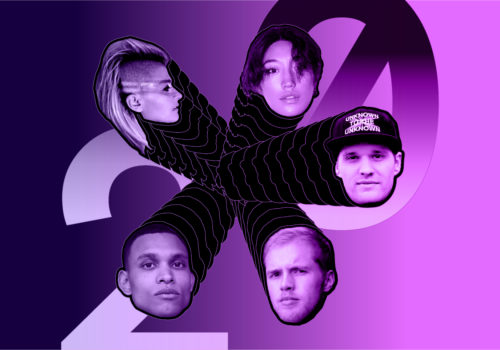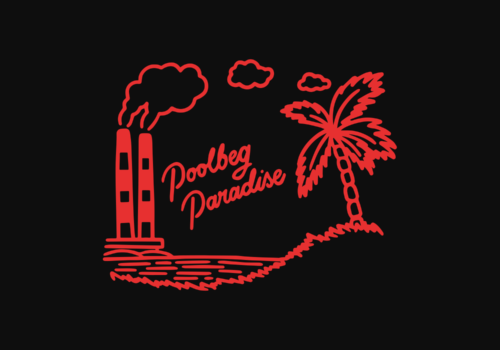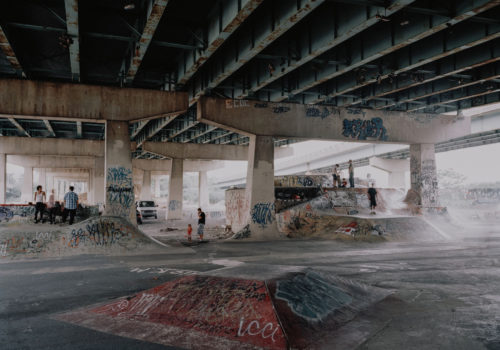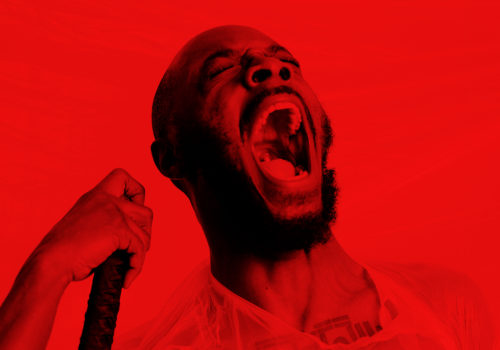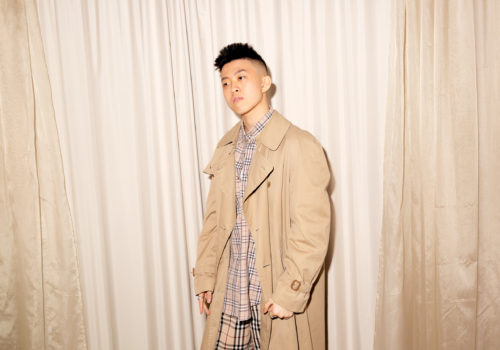How Aches became Ireland’s biggest street artist
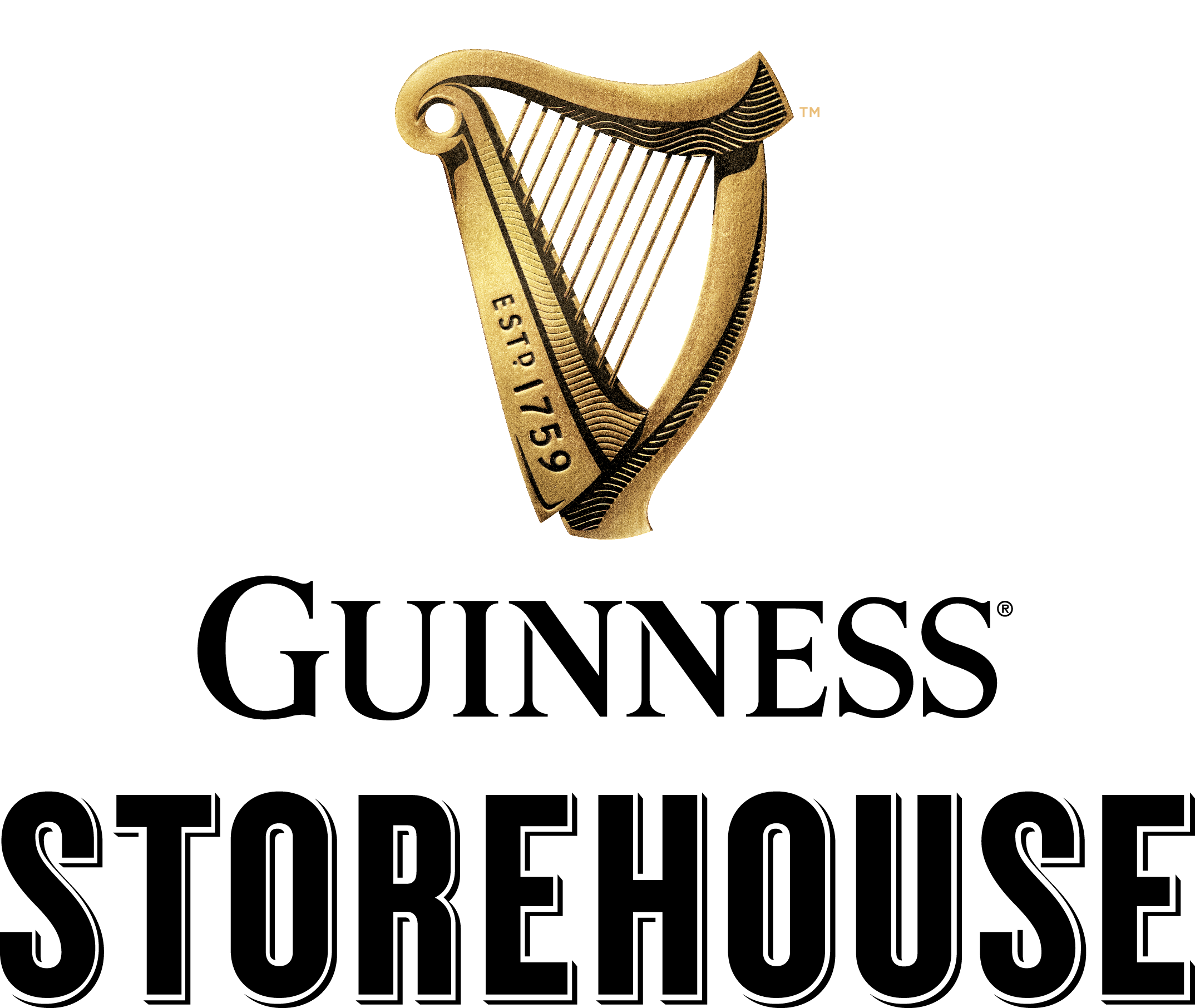




Words: Emily Mullen
Photography: George Voronov
Images of Artworks Courtesy of Aches
We catch up with Aches, one of Ireland’s preeminent creative forces, while he works 19 hour days finishing up his project in the Guinness Storehouse’s new installation Canvas D8. The brand-new cultural experience which is offering a platform for culture to thrive in the heart of Dublin’s exciting Liberties district. Dublin artist Aches has curated a joyful and inspiring collection of art installations, all the way from the streets of the Liberties to the peak, the famous rooftop Gravity Bar – culminating in an unforgettable experience for you and your friends. This experience signifies the reawakening of Dublin – heralding hope for a new cultural rebirth for the city, with Guinness Storehouse leading the way to brighter days. Book a visit to the Guinness Storehouse to experience Canvas D8 and Aches artwork here.
He needs a coffee, understandably, so we walk across the cobbled streets to Container Coffee and sit underneath the shadow of the old Saint Patrick’s distillery tower. The boundary is covered in Subset’s hands, the black hoardings picked out with the ombre colour wheel distinctive to a branch of the collective. It seems like a pretty good place to talk about Dublin’s creative scene. Despite the backdrop of high rents, the creative brain drain and the neverending closure of cultural institutions, artists like Aches stay, live and work in the city. They add to it, improve it and continue to create in it. Often at an expense to themselves and their careers, they stay and continue to improve their craft and attempt to make the place a little brighter.


Beyond Paint on a Wall
You know Aches’s work, even if you don’t know anything about him. His work goes beyond just paint on a wall, the typical tags that you see day in day out slashed against disused buildings. From hoarding, gable ends, to drab alleyways, Aches has created some of the most recognisable and key images in the country’s cultural scene. His Savita Halappanavar’s mural became one of the defining images of the Repeal the 8th movement, and his Dolores O’Riordan mural in Limerick was a focal point for a city in mourning. These monumental pieces, have arguably reframed the way we think about social issues and refocused our collective conscious. He has redrawn narratives and created spaces of cultural significance where passersby have smiled, laughed and cried.
Constantly unique, Aches attacks his work in an unfaltering manner, aggressively changing and adapting his style to contain newer and newer forms of expression. His work touches on a variety of disciplines from graphic design, fine art, typography, to even film and animation, through this melding and meshing of disciplines he has created his own style and has fundamentally pushed the boundaries on what can be achieved with a spray can. The diversity of his work can’t be shown in one piece but in collections of them, of interwoven words, interlocking images, of gigantic historic and public figures that appear to jump before our eyes.
His work occupies the hinterland between what can be seen and what can’t, as Dublin-based muralist Holly Pereira describes his work, “there is something about his work that refuses to let your brain rest, something concurrently elegant, melancholic, dystopian yet familiar… Aches’s work presents us with our reality, but through a slightly skewed lens, revealing something lurking under the surface – a fracture, a break, a glitch in reality.” The quality and discipline of hand can be seen from a mile off, but mostly in the murals that he now focuses on, delicate depictions of friends and family in striking colours, often paired with graphically distinct tags. His technical ability is staggering, as is his drawing capabilities which have taken a front seat over the last couple of years, pushing him further into the world in-between muralism and fine art.
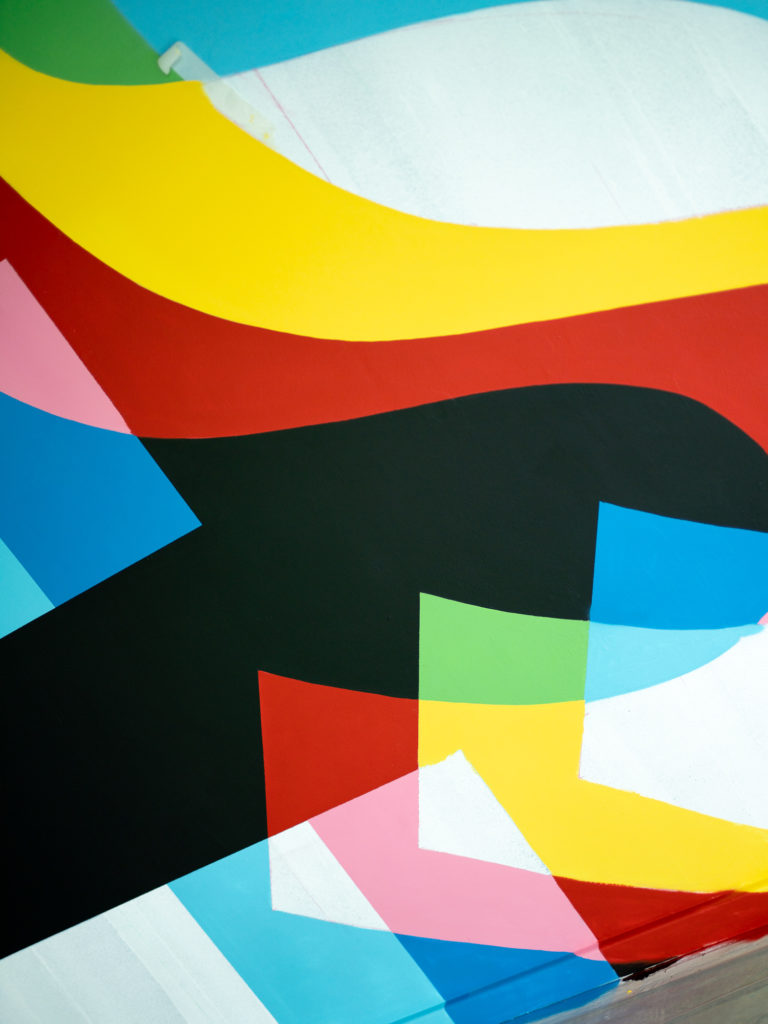



“When I started you could have been painting anything, you could be painting the Mona Lisa outside. If you were using spray paint, people immediately thought it was vandalism”
Aches
A fondness for handwriting started Aches into graffiti, while he was still in school in Northside Dublin. Selecting the name “Aches” because of the number and the symmetry of the letters. At age 15 he began tagging spots around his local area with friends, in between playing GAA. He was constantly drawing at home, of which his Mam was extremely supportive while his Dad (who drew himself) gave him some pretty honest feedback about his work, “you need that though,” he says, “you don’t want someone to blow smoke up your arse or you will just think you are deadly and not learn”. His emphasis wasn’t completely focused on graffiti back then. When he was first starting out between the years 2007-2015 he painted five to ten pieces a year at most, “I loved it but I just didn’t have the time. I’d be playing matches every weekend and then school the rest of the week,” he said.
Aches is old enough to have started out with the joys of dial-up internet, he remembers “when I started painting I had no internet on my phone, we had one family computer that had dial-up that you wouldn’t even go on, it took ages to load a page, there was no Instagram, no Flickr.” This lack of source material did not hinder him however, in fact, it created a nice atmosphere for him to just get out and paint with his friends without any pressure.


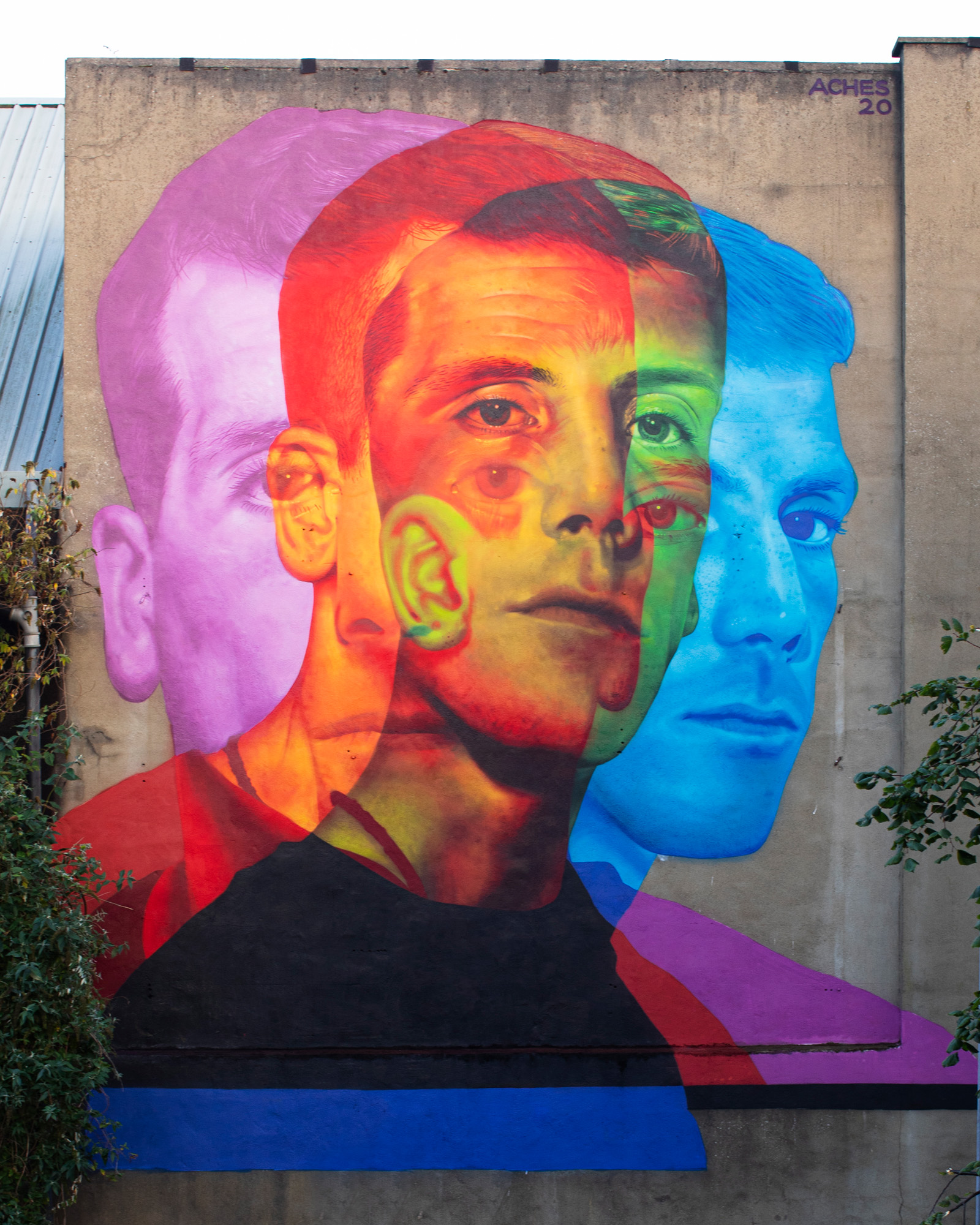

It was the ripple effects of a project that Aches did in college (he studied Creative Communications at NCAD) that kicked him back into graffiti in a major way. Through his project documenting graffiti in Ireland, he began hanging out with lads he once knew from that scene. “They kind of really inspired me to start painting more,” he said, “they would be showing me pictures of their catalogue of what they’ve done and how much they’ve done, and I just thought ‘I need to get on that level'”.
That level took Aches some time to achieve, after college, he dedicated his time and resources to painting. Between the years 2015-2017, Aches was painting five or six times a week, “I bought a lot of paint, spent a lot of time painting”. Aches describe that time now as a “tough” but necessary period of “self-investment”, looking back he says “I lived for a long time not being very optimistic about the whole thing, just making no money, spending a lot of money on paint but it was all I wanted to do.”
This notion of constantly pushing himself towards improvement is one that he has carried throughout his now well-established career. He is constantly challenging himself, daring himself to improve, bounding towards more and more difficult mediums and concepts. “[I]f I come up with an image that I’m like ‘ah this is going to be poxy to paint’ I still do it”, Aches says, “there are definitely pieces that I’ve done that when I started off I thought it was going to look sh*t and I’m not going to be able to do it right, a lot of the time I would be like that. But I suppose you just have to push through and be like ‘no, just do it'”.
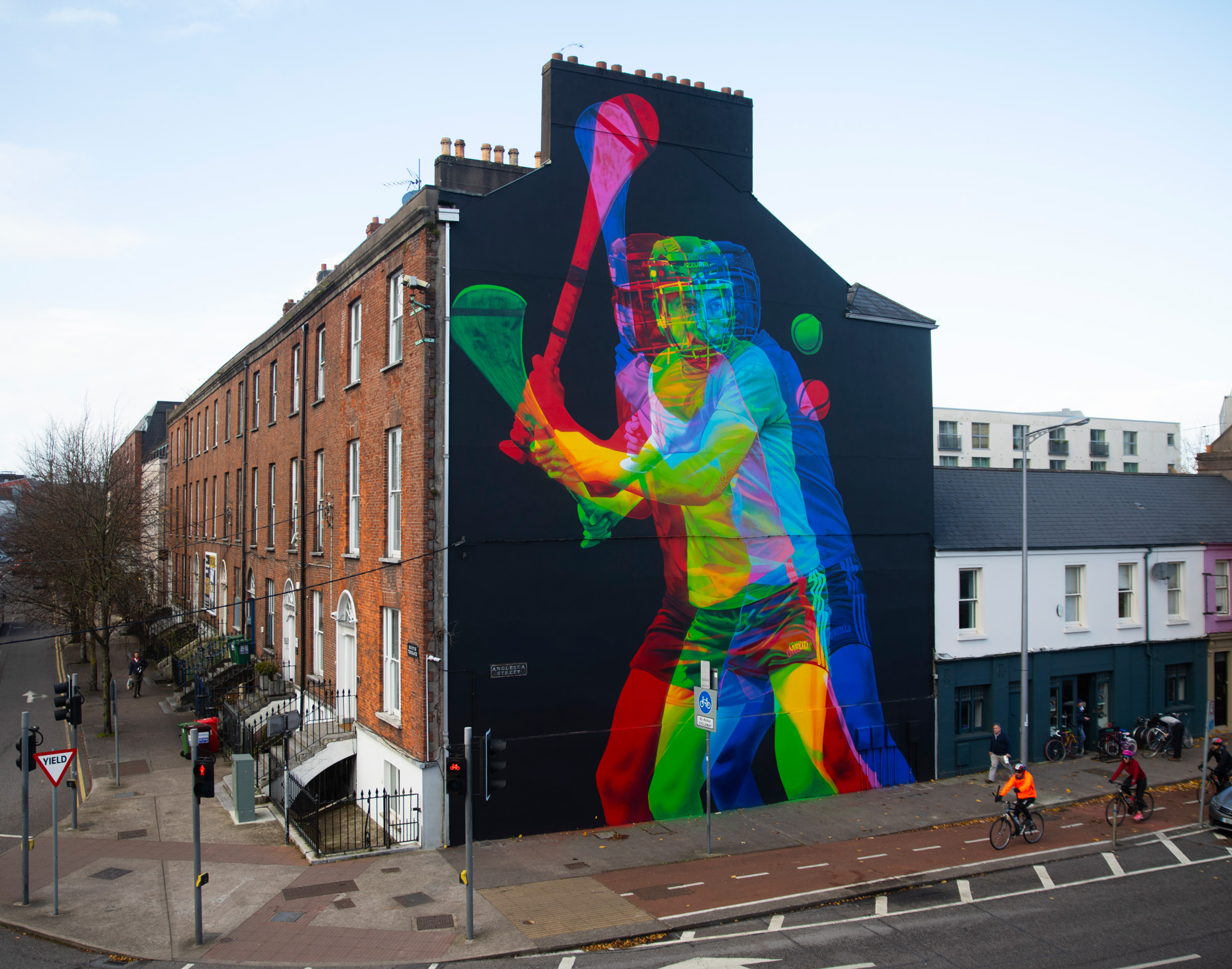

A Fixation with Self Improvement
This fixation with self-improvement is even carried through to his colour schemes, which are notoriously striking. He’s constantly aware of repetition and of finding fresh colour combinations to work with, “when you’ve been painting for 14 years, you can tend to start using the same colours schemes over and over again, so it’s good to draw inspiration from outside of graffiti or outside of murals because that’s when you start coming up with something innovative and new that hasn’t been done before which was something that I’ve tried to do for a long time. I was actively trying to come up with a style that someone hadn’t done before, because the sheer amount of people doing it, it does start to get a bit repetitive.”
His education in graphic design, is evident in his work, from his composition, his fluidity of colour to his ability to evoke depth and colour on a 2D surface. That background has helped him draw inspiration from everywhere, informing the way he looks at the world “it makes me look at everything differently”. “I take inspiration from everything, even just walking down the street someone’s outfit, maybe they might have a nice colour combination with their clothes that I would be like ‘ah yeah, I’m going to do that on my next piece’ the last graffiti piece I did, I took the colour scheme from the front cover of a magazine” he added.
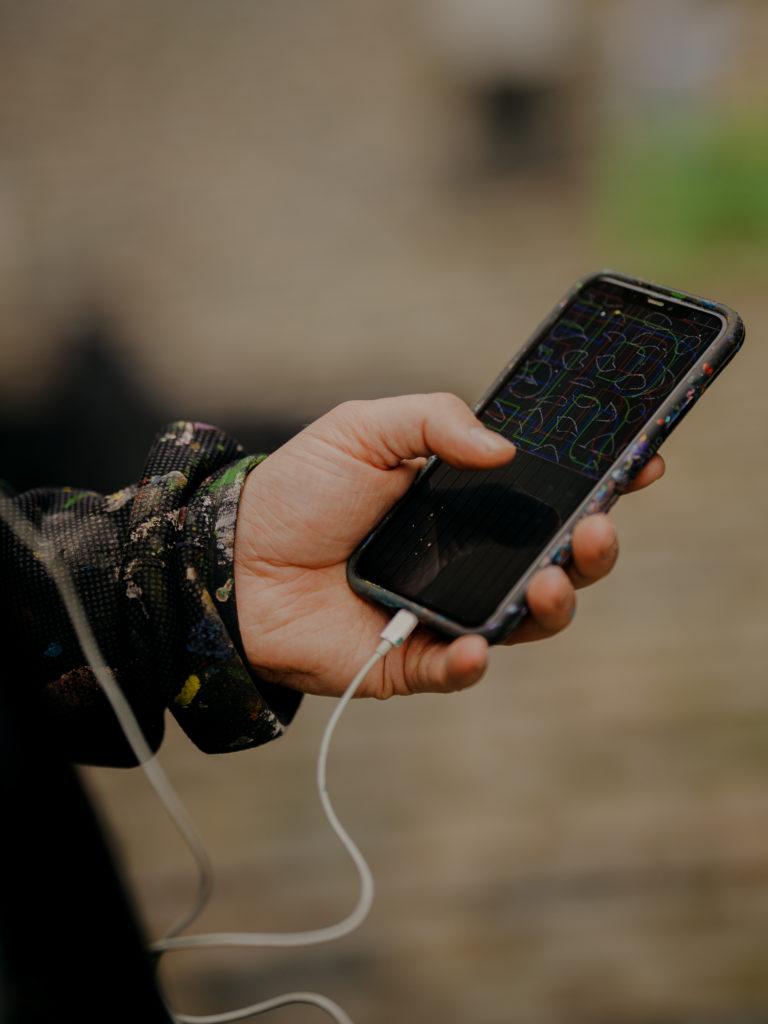

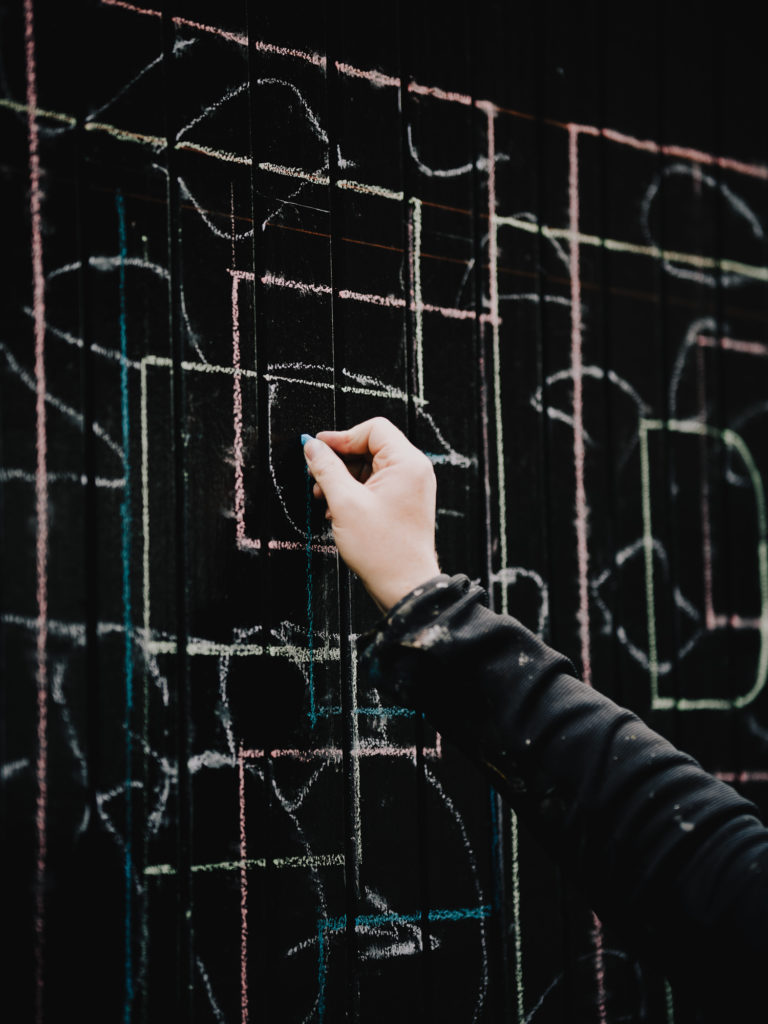

If you are doing good stuff and working hard, people will notice you.
Aches
Aches has achieved an enviable level of success, which begs the inevitable question that hovers around all Irish creatives still in the country, why are you still here? His answer is simple, he loves Ireland. “I wouldn’t be against moving away but I definitely want to settle in Ireland like,” he admitted, “it’s hard to make a living here, let alone as an artist. It’s tough, I’m super lucky and fortunate to be doing what I’m doing. I don’t know what I’d be doing if I wasn’t painting, I haven’t a clue.” This pressure to move is often heightened by those who are away themselves, “one of my mates in London is always saying to me ‘come over here man, your mad staying there’ but I don’t know I just felt like I was getting a name for myself here and it was working well here, suppose it’s sort of like small pond, it’s a bit easier to get noticed.”
With his characteristically buoyant assessment that “the Dublin scene has a huge skill level”, Aches is remarkably positive when he talks about the Dublin graffiti and mural scene. While Aches focuses mainly on letter-based or figurative pieces, he has a great appreciation for those doing abstract work on the scene, “if you talk to people, they will tell you that really abstract work is harder than figurative stuff because anyone can make an abstract piece but to really have the knowledge to make a space work when you’re creating with abstract is a lot, you know.” Aches has a keen appreciation for others work. He speaks highly of everyone in the industry – from Maser, who has acted as a mentor to him, to Evoke, a legend of the Dublin scene whose work has been appearing around the city streets for decades. Since he first starting clubbing together with a bunch of friends to tags the dreary streets of Dublin, respecting the work of those more advanced than him appears as a key theme in Aches career.
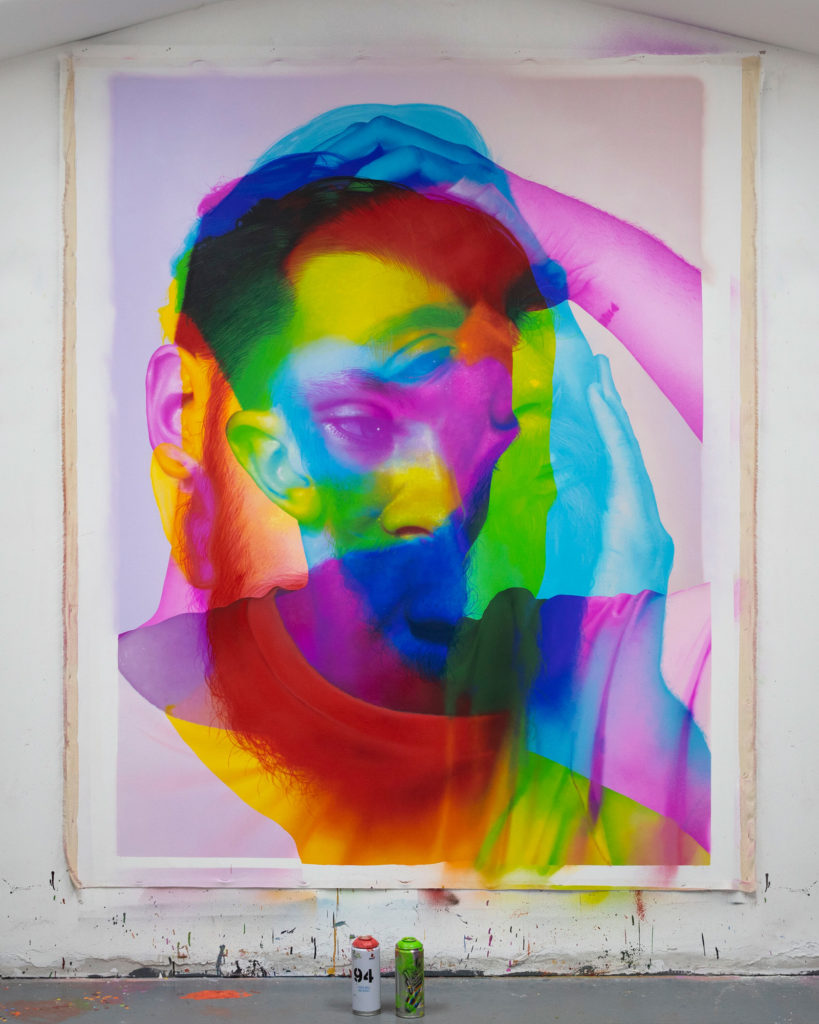

One of my mates in London is always saying to me ‘come over here man, your mad staying there’ but I don’t know I just felt like I was getting a name for myself here and it was working well here, suppose it’s sort of like small pond, it’s a bit easier to get noticed.
Aches
A clapped out notion of graffiti prevailed in the mainstream when Aches first picked up a spray can. “When I started you could have been painting anything, you could be painting the Mona Lisa outside. If you were using spray paint people immediately thought it was vandalism.” Pointing to this bias Aches added, “if you painted the exact same thing with a brush right beside it they wouldn’t care but once you had spraypaint in your hand, it was just an instant connection with vandalism.”
Fast-forward a couple of years and graffiti is not merely accepted, but celebrated. There is now a growing trend of businesses throughout Ireland, seeking out artists to paint the walls alongside their buildings, to tag their shop fronts and enliven their interiors. Businesses aligning themselves with graffiti artists’ work is something that would have been unheard of a couple of years ago. “Businesses obviously realise the potential that this particular subculture has, it’s probably one of the fastest-growing art movements in the world, there are millions of graffiti artists, street artists and muralists popping up all over the place,” said Aches, who views this change in social attitude as an overwhelmingly positive move for the culture. Aches attributes to these developments Banksy-effect, “he changed the way people viewed street art and graffiti”.
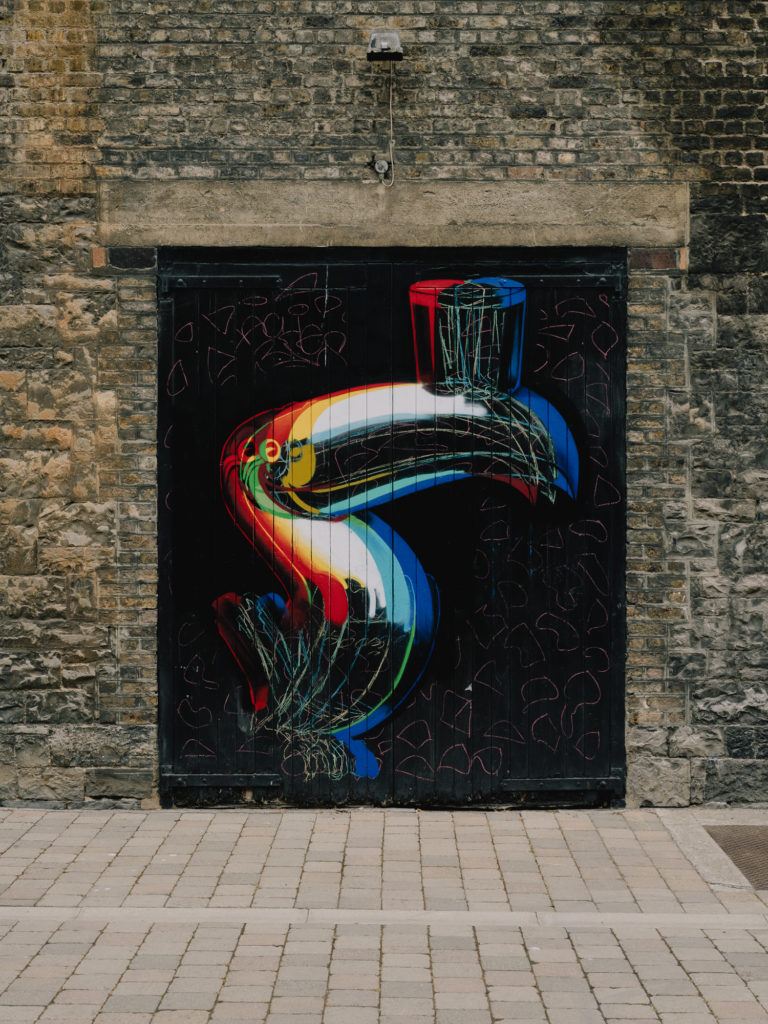

Aches sees businesses and artists aligning as a massive opportunity, not only through fostering talent but through providing a much-needed space. Using his pieces that line the Guinness Storehouse walls as an example, Aches says “it is amazing to be able to paint here [in the Guinness Storehouse] where you are going to get the footfall, like 1.7 million people coming in here [in 2019 alone] so that’s huge for me, and it’s so diverse the number of people there, they might not have any interest in art.” The Guinness Storehouse Team first approached Aches in early 2020 prior to the opening of the highly anticipated new Gravity Bar, whereby he was commissioned to create a bespoke art installation that today features on four walls throughout the bar. Working with businesses such as the Guinness Storehouse affords Aches’s work to be exposed to a different audience beyond the gallery frequenting cognoscenti. “[T]he classic thing that everyone loves about street art that it’s not stuffy, it’s not in a white space, you don’t have to wear a suit, you don’t feel intimidated by it.”


An Inspiration to Many
Aches’s standing as one of the top artists in the country does seem to weigh on him a little. He speaks of giving guidance to younger artists and of one day creating a studio that could foster young upcoming talent. “I’d definitely love to have a studio and gallery space in Dublin, I’d love to have a huge studio that I could facilitate younger artists that aren’t able to afford a good space, that would be the dream. To have a huge gallery space in Ireland for multiple artists to use,” he said. But his mere presence on the scene is an inspiration to so many. As Dublin-based graffiti artist DECOY put it, “Aches has outperformed everyone’s notion of what is possible with a spray can,” he added, “from his unmatched artistic mastery to his business etiquette in the world of art, he has set an example for us all to follow.” For Pereira, she has described his work as “inspirational and aspirational”.
“By making the work that he does, he has not just set a new bar for murals, street art and graffiti at the very top of the scale, but issued a cordial invitation to the community to paint better, observe better, to be better artists,” she said.
Opportunities for young artists in Dublin are at a premium, which is why projects like the Guinness Storehouse are important. Aches and the Guinness Storehouse will also use the launch of Canvas D8 to support the wider artistic community in Ireland – with local D8-based artist Claire Prouvost, hand-picked by Aches, contributing a series of five murals to the streetscape, each depicting vibrant everyday scenes from the Liberties. “There’s a lot of galleries in Dublin but very few of them promote young Irish artists, they go with the safe option of artists who’ve already made it, I don’t want to rag on them but they don’t like taking a gamble,” he added, “there’s a lot of talent in Dublin, and it seems the only shows that all these young artists are having, they’ve either put on themselves or they are abroad.” Working with a brand like the Guinness Storehouse Aches has described as “a real honour” emphasising the importance he added, “it’s important because there’s a lack of support for young artists in Ireland, in every sense of the word, like there’s not much funding for projects, and when there is it’s usually a well known artist that’ll get it.” Aches identified some of the problems younger artists face when applying for creative projects, which often involves a lot of time and resources, “you create the design, fill out this form, all this bureaucracy and then also we aren’t even going to contact you if don’t get the job and you’ve done all that work for free, it could take you a week like. Also, the budgets could be a couple of hundred quid if you do get it, paint costs be a couple of hundred to do the thing like.”




For any graffiti artist, a portfolio of large scale projects is deemed as a prerequisite for international success. Aches has struggled with the limitations that Ireland’s diminutive urban environments have posed to his ambition. “it’s very tough… one of the tallest buildings in Dublin is […] Liberty Hall say and it doesn’t even have a facade that you can paint. To build a portfolio in Ireland of large scale murals is near impossible.” This places Irish muralists at a distinct disadvantage as “no one is going to take a chance on an artist in a country to paint a ten-story gable if they’ve only ever painted a one or two-story gable. So to have people like Guinness Storehouse creating projects for artists at that scale is great”.
With vertical real estate at a premium in Dublin, Aches has been venturing into the outer reaches of the city in order to find places to paint. He admits he’s been trying to push himself lately. “I’ve been painting the same spots for years now, behind Whelan’s, The Bernard Shaw, there’s a few spaces but you get bored of them after a while and you want to find new spaces”. This search for new vistas is driven by a compulsion “to paint every single place I ever go to […] to leave something there.” Especially rewarding for Aches is “if it’s a space that nobody has painted before.”


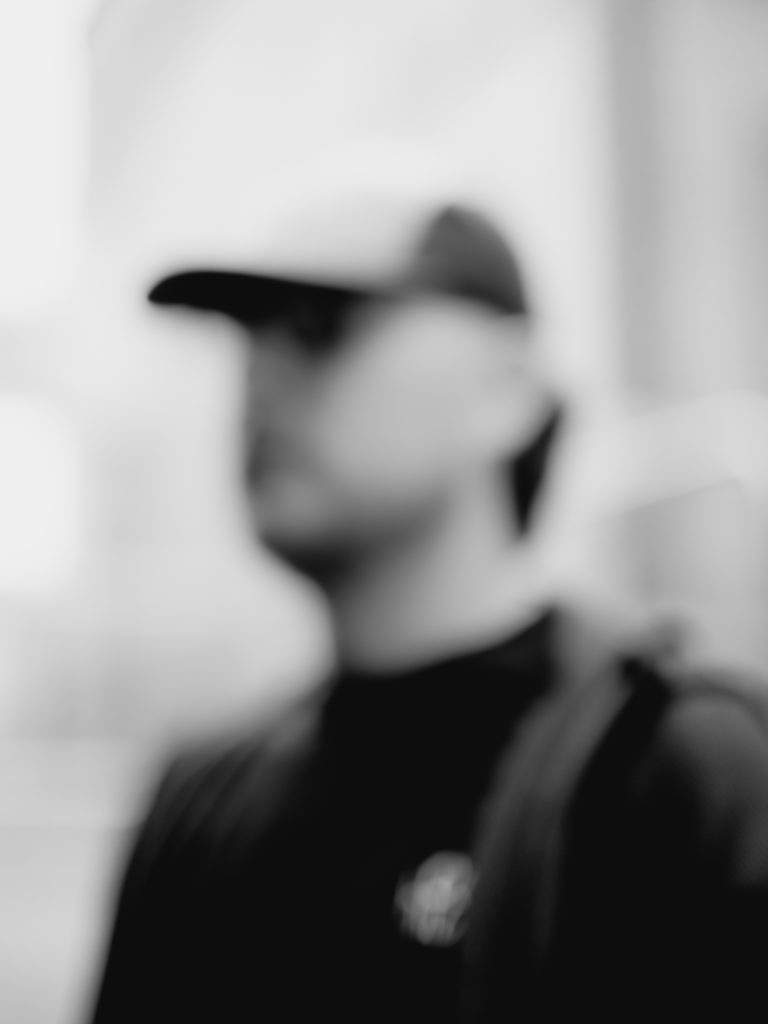

I just wouldn’t want my face being posted online and then like if someone Googles me and my work I’d rather my work comes up than a picture of my face. That’s it I want it to be about the work and not me.
Aches
With such a prominent social media presence and the scale of his projects increasing, Aches anonymity will always be a talking point. Does he ever crave the personal recognition that the status that his work could afford him? “Not really, say with the Guinness Storehouse, I’ve worked with them already so they know what the craic is with my anonymity, but it’s funny whenever a photographer comes in they do want that shot of your face, even with my mask on I don’t like getting a direct shot in my face. If you are working with someone new they say to you ‘ah why not why not?’ but it’s because I’ve kept my anonymity for 14 years, why would I give it up right now for you because you want a shot or something. People don’t understand it, and it’s nothing to do with me thinking I’m Banksy or anything, I like my privacy. I’d hate to be walking around the street and get spotted or known by someone, not that I think that will happen but I just don’t understand why anyone would want to be a celebrity or anything. When I’m painting the street if someone comes up and asks me ‘are you Aches?’ I’ll say yeah and I’d have a chat with them, but I just wouldn’t want my face being posted online and then if someone Googles me and my work I’d rather my work comes up than a picture of my face. That’s it. I want it to be about the work and not me.”
Despite personally shying away from the limelight himself, Aches is always keen to create portraits of his friends and family. There’s a strange dichotomy between protecting his anonymity and painting those closes to him. “I suppose if people really wanted to do their research, they could figure out who was friends with all these different people. See I don’t care about it that much, but I would prefer to stay anonymous, but I’m not going to not paint my friends because I’m worried about that, who else would I paint like? I have thought about painting just randomers on the street because when I’m painting my mates I just take their picture right there and then before I start panting. So I could do this with randomers, just take their picture on my phone and paint them from that like. I’ve thought about that a lot actually, but I might start doing that, I just want to paint the people that live in Dublin as well. But I do enjoy painting my mates like they get a buzz out of it as well, and I get a buzz out of it, it’s funny like, it’s literally just something I find funny. People think it’s a serious thing but it’s not.” His friends do seem to get a kick out of what he does, being friends with the same group since he started school, he says that they jokingly keep asking him when he’s going to “get a real job and stop writing his name on walls”.
Walking back down the cobblestone lanes to the Guinness Storehouse, Aches’s work peers into view. His depiction of the brand’s toucan mascot originally designed by artist John Gilroy captures the gaze before the iconic black gates of Market Street come into view. The words TOGETHER STRONGER are picked out in Aches’s distinct hand a reference to the Irish proverb ‘Ní near go cur le chéile’. A rallying cry which has been used to bring us together throughout the pandemic. This communal message resonates with Aches’s career, underpinning his collaborative approach with aspiring Irish artists and justifying his continued presence in his home city when he could have struck out alone in more glamourous locations. Picked out against the iconic Guinness black, this mural vindicates his approach, etched onto the city’s social fabric for the world to see.
Elsewhere on District: Guinness Storehouse launches Canvas D8: an artistic cultural experience in the heart of the Liberties.




